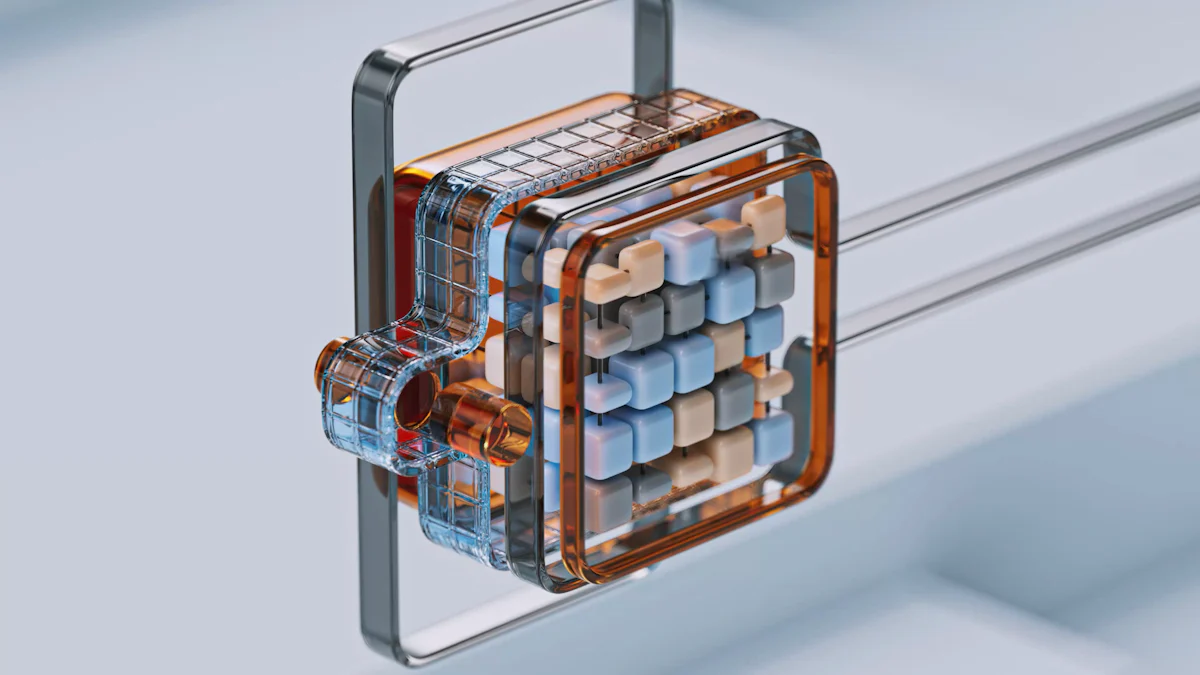How to Integrate chatGPT and QuickCEP for Advanced AI Capabilities in Shopify

Understanding the Power of AI in Shopify
In today's competitive e-commerce landscape, leveraging advanced technologies like AI has become imperative for businesses aiming to stay ahead. The integration of AI in Shopify offers a myriad of benefits, including enhancing customer experience and streamlining operations. Recent research found that almost half — 48% — of businesses using generative AI in ecommerce have enhanced their shopper experiences. This demonstrates the significant impact AI can have on improving customer satisfaction and engagement.
The role of a Shopify AI assistant is multifaceted. Firstly, it plays a crucial role in enhancing the overall customer experience by providing personalized recommendations and support. By using AI, ecommerce websites can personalize their customers' shopping experience by recommending products based on their purchase history, preferences, and behaviors. This level of personalization leads to increased customer satisfaction and loyalty.
Secondly, an AI assistant such as chatGPT and QuickCEP contributes to streamlining operations within a Shopify store. It does so by automating various tasks such as order processing, inventory management, and customer inquiries. By offering round-the-clock support, merchants can address customer queries and concerns instantly, thereby reducing the chances of abandoned carts and increasing conversions.
When considering how chatGPT and QuickCEP fit into your Shopify strategy, it's essential to recognize their individual capabilities. chatGPT brings conversational capabilities to the table, allowing for seamless interactions with customers through chat interfaces. On the other hand, QuickCEP specializes in task automation, enabling efficient management of backend processes such as order fulfillment and inventory tracking.
The growing significance of AI in e-commerce is evident from statistical data indicating that organizations adopting AI strategies generate at least 20% additional revenue while reducing costs by an average of 8%. Moreover, the AI-enabled eCommerce market size is projected to reach $16.8 billion by 2030, reflecting a substantial growth trajectory at a rate of 15.7% CAGR over the next eight years.
By understanding these trends and harnessing the power of chatGPT and QuickCEP within your Shopify store, you can position your business for sustained growth while delivering exceptional experiences to your customers.
Preparing Your Shopify Store for Integration
As you embark on the journey to integrate chatGPT and QuickCEP into your Shopify store, it's crucial to start by evaluating your store's specific needs and ensuring compatibility and compliance with the platform's requirements.
Evaluating Your Store's Needs
Before diving into the integration process, take the time to identify areas for improvement within your Shopify store. This could involve assessing customer pain points, such as navigation challenges, product discovery hurdles, or support limitations. By understanding these pain points, you can set clear objectives for AI integration that directly address these issues. For instance, if customers struggle with finding relevant products, setting an objective for ChatGPT to provide personalized product recommendations can significantly enhance their shopping experience.
Setting clear objectives for AI integration is essential for aligning the technology with your business goals. Whether it's improving customer satisfaction, increasing sales conversion rates, or optimizing operational efficiency, defining these objectives will guide the integration process and ensure that the implemented AI solutions directly contribute to your store's success.
Ensuring Compatibility and Compliance
Checking the technical requirements of both chatGPT and QuickCEP is paramount before proceeding with integration. Ensure that your Shopify store meets the necessary technical specifications to seamlessly incorporate these AI tools. This includes verifying compatibility with your existing plugins, themes, and overall infrastructure.
Moreover, understanding Shopify's policies on AI tools is crucial to ensure compliance with platform guidelines. Familiarize yourself with any restrictions or regulations related to using AI-powered applications within the Shopify ecosystem. By doing so, you can avoid potential conflicts and ensure a smooth integration process without facing unexpected compliance issues down the line.
By carefully evaluating your store's needs and ensuring compatibility and compliance with Shopify's requirements, you lay a solid foundation for integrating chatGPT and QuickCEP, setting the stage for enhanced customer experiences and streamlined operations.
Step-by-Step Integration of chatGPT and QuickCEP
Now that you have a clear understanding of the role of chatGPT and QuickCEP in enhancing your Shopify store, it's time to delve into the step-by-step process of integrating these advanced AI capabilities.
Setting up chatGPT for Your Shopify Store
Creating a chatGPT Account
To begin the integration process, start by creating a chatGPT account. This involves visiting the official chatGPT website and signing up for an account. Once registered, you will gain access to the necessary tools and resources to set up the AI assistant within your Shopify store.
Configuring chatGPT Settings for Shopify
After creating your chatGPT account, proceed to configure the settings specifically tailored for Shopify integration. This involves generating API keys and authentication tokens that will enable seamless communication between chatGPT and your Shopify store. By following the provided documentation and guidelines, you can ensure a smooth setup process without encountering any technical hurdles.
Integrating QuickCEP with Shopify
Installing QuickCEP from the Shopify App Store
The next step involves installing QuickCEP from the official Shopify App Store. Simply navigate to the App Store within your Shopify dashboard, search for QuickCEP, and initiate the installation process. Once installed, you can proceed with customizing its settings according to your store's specific requirements.
Customizing QuickCEP Settings for Your Store
Upon successful installation, customize QuickCEP settings to align with your store's unique needs. This may involve configuring automated responses, setting up order processing workflows, and tailoring customer interaction parameters. By personalizing these settings, you can ensure that QuickCEP seamlessly integrates into your existing operations while delivering enhanced customer experiences.
Testing and Troubleshooting
Conducting Initial Tests
With both chatGPT and QuickCEP integrated into your Shopify store, it's crucial to conduct thorough initial tests to ensure their seamless functionality. Test various scenarios such as customer inquiries, order placements, and personalized recommendations to validate their performance.
Addressing Common Integration Challenges
During testing, keep an eye out for common integration challenges such as communication errors or misconfigured settings. Should any issues arise, refer to the comprehensive documentation provided by both platforms or reach out to their support teams for prompt resolution.
By following these step-by-step instructions for integrating chatGPT and QuickCEP, you can harness their advanced AI capabilities effectively within your Shopify store while ensuring a seamless experience for both customers and merchants.
Maximizing the Benefits of Your New Shopify AI Assistant
As you embark on the journey of integrating chatGPT and QuickCEP into your Shopify store, it's essential to strategize for their effective utilization. By leveraging these advanced AI capabilities, you can optimize your operations and elevate customer experiences, ultimately driving business growth.
Strategies for Effective Use of chatGPT and QuickCEP
Training Your AI for Specific Tasks
To maximize the benefits of your new Shopify AI assistant, it's crucial to train chatGPT and QuickCEP for specific tasks tailored to your business needs. Utilize chatGPT to engage customers in meaningful conversations, provide personalized recommendations, and offer real-time support. Meanwhile, empower QuickCEP to automate email responses, guide customers through the shopping process, and deliver intelligent product recommendations. By training each AI tool for its designated tasks, you can ensure a cohesive and unified shopping experience that resonates with your customers.
Continuously Monitoring Performance
Continuous monitoring of your Shopify AI assistant's performance is key to maintaining optimal functionality. Regularly analyze metrics such as response times, customer satisfaction ratings, and conversion rates attributed to AI interactions. By staying vigilant in monitoring performance, you can identify areas for improvement and make informed adjustments to enhance the overall effectiveness of chatGPT and QuickCEP within your store.
Measuring Success and Making Adjustments
Analyzing AI's Impact on Customer Satisfaction
Measuring the impact of chatGPT and QuickCEP on customer satisfaction is paramount in evaluating their effectiveness. Analyze feedback from customers interacting with the AI assistants to gauge their level of satisfaction. Additionally, track changes in customer retention rates and repeat purchases influenced by AI-driven interactions. This data provides valuable insights into how effectively the Shopify AI assistant contributes to enhancing customer satisfaction.
Tweaking AI Settings for Optimal Results
Based on performance analysis and feedback from customers, tweak the settings of chatGPT and QuickCEP for optimal results. Fine-tune conversation flows, refine automated responses, and adjust product recommendation algorithms based on observed patterns and customer preferences. By making these iterative adjustments, you can continuously improve the capabilities of your Shopify AI assistant to better serve your customers' evolving needs.
By implementing these strategies for effective use of chatGPT and QuickCEP, you can harness their full potential as a Shopify ai assistant while delivering exceptional experiences that drive business success.


